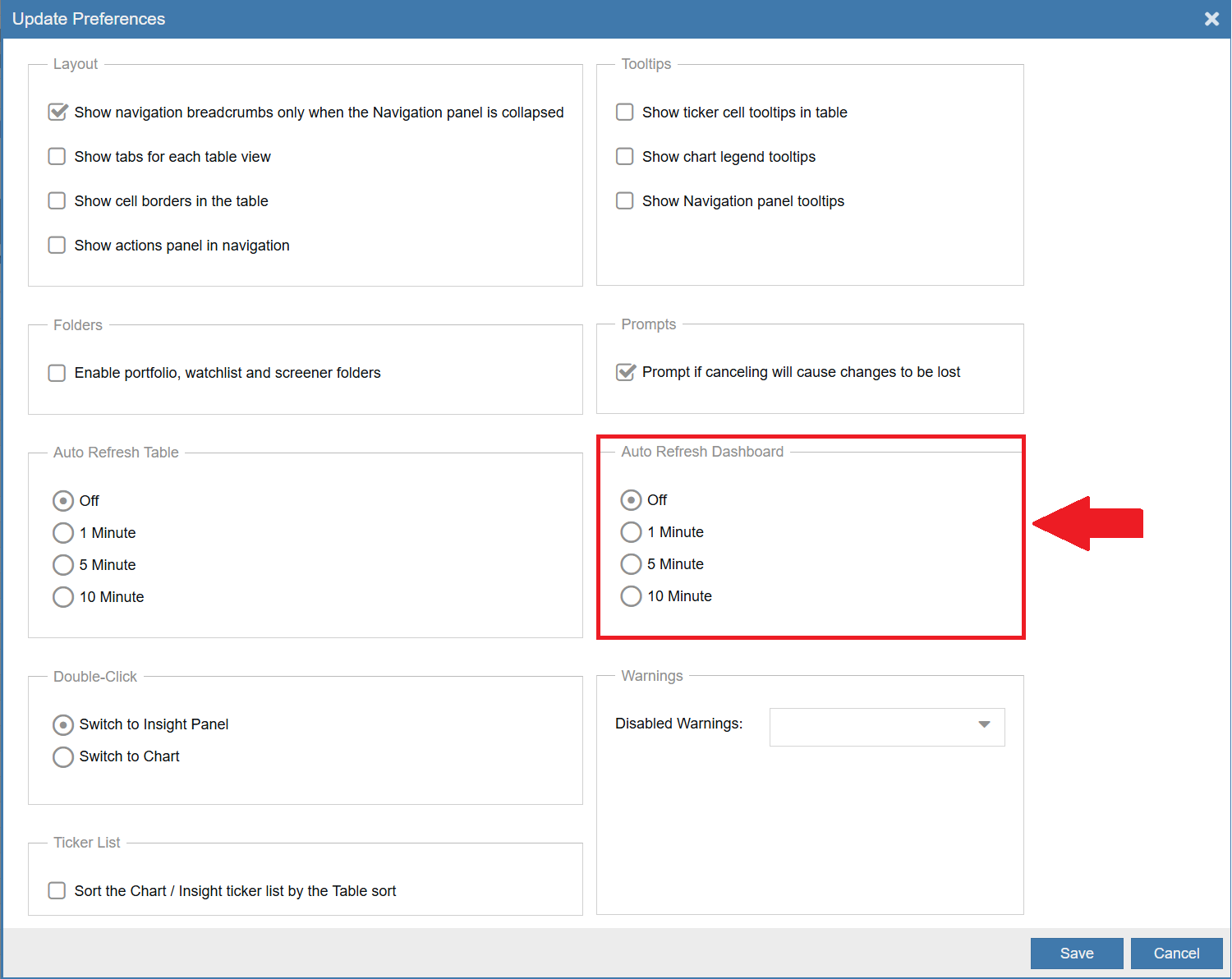Help & Support
- Quick Start Guide
-
How To
-
Analyze a Stock
- Gaining Insight
- Seeing What the Analysts Say
- Getting Research Reports
- Seeing How a Stock Scores
- Seeing How a Stock Rates vs its Peers
- Checking Performance vs Competitors
- Checking the Technicals
- Analyzing Growth
- Analyzing Dividends
- Checking Seasonality and Monthly Returns
- Reviewing Financial Statements
- Viewing Historical Data
-
Analyze a Stock
-
Stock Rover Help
-
Introduction
- Stock Rover Overview
- The Premium Trial
- The Main Window
- The Start Menu
- The Search Bar
- Navigating Stock Rover
- How Quotes Work
- Managing the Panels
- Breadcrumbs
- Right Clicking
- Multi-Select
- Drag and Drop
- Auto-Resize Columns
- Keyboard Shortcuts
- Performance Report Emails
- Stock Rover Research Reports
- Mobile Experience
- Auto-Login
- Account Management
-
The Chart
- Charting Overview
- Types of Charts
- Setting Chart Options
- Selecting Tickers
- Setting the Time Period
- Adding Benchmarks
- Setting Baselines
- Charting Events
- Candlestick and OHLC Charts
- Valuation Charts
- Technical Charts
- Ratio Charts
- Fundamental Charts
- Managing Charts
- Resetting the Chart
- Accounting for Dividends
- Saving Charts as Images
-
Introduction
- Support FAQs
- Videos
-
Metrics
- Metric Overview
- Chartable Metrics Overview
- Analyst Estimates
- Analyst Ratings
- Balance Sheet
- Cash Flow Statement
- Custom Metrics
- EPS Estimates
- EPS Estimate Trends
- ETF & Fund Asset Allocation
- ETF & Fund Equity Capitalization
- ETF & Fund Equity Classification
- ETF & Fund Equity Style Box
- ETF & Fund Holding Statistics
- ETF & Fund Profile
- ETF & Fund Region Breakdown
- ETF & Fund Sector Weightings
- Fair Value & DCF Model
- Grades & Scores
- Growth
- Income Statement
- Industry Deciles
- Per Share
- Portfolio
- Portfolio Reporting
- Price
- Profile
- Profitability
- Profitability vs. Industry
- Profitability vs. Sector
- Returns
- Returns vs. Industry
- Returns vs. Sector
- Returns vs. S&P 500
- Revenue Estimates
- Sector Deciles
- Stock Rover Ratings
- Technical Indicators
- Valuation
- Valuation Range
- Valuation Yields
- Volume
Customizing the Dashboard
Contents
Overview
The Dashboard can be customized to suit your needs. You can decide which sections you want to include. You can also change the order of appearance by moving the sections up and down. In that way, you can lead with the sections that have the most importance to you. You can also decide which of your portfolios are displayed in the dashboard. Additionally, you have the ability to create and manage your portfolios via the dashboard. For free users, this is the only place for performing portfolio management.
Moving/Remove Sections
In the screenshot below, you can see the options to move a section up or down in the dashboard or if you would like to remove the section entirely. To access this menu, you want to click the hamburger menu on the right of the section and select the action you would like to perform.
This screenshot shows the ability to select what you would like to be included in the dashboard from the list of available sections. This is the option you would use if you removed a section and then would like to add it back.
Add/Remove Portfolios
The Dashboard contains several sections where it shows your portfolio details. As you can see in the two screenshots below, portfolios can be selected by clicking the “Portfolios” button in the top left corner of the dashboard or by clicking the hamburger menu on the right of the section. In both options, you will select the portfolios you would like to see in the Dashboard.
Note that there is a limit on the number of portfolios that can be selected in the dashboard, depending on the plan. See our compare plan page for more details.
Create/Manage Portfolios
The dashboard has portfolio management capabilities. As you can see in the two screenshots below, portfolios can be created by clicking on the Actions button or clicking the portfolio folder and selecting ‘Create Portfolio’. For more information on creating portfolios, please see our portfolio help.
Management for your portfolios is performed by right-clicking on an existing portfolio or by hovering on over the portfolio and clicking on the down arrow that appears on the hover. Either action will display a new menu, which is highlighted by the red box in the image below. The menu allows you to do a variety of operations on your existing portfolios, including modifying your portfolio positions. This can be achieved by either manually editing your positions or by importing a new positions file from an Excel spreadsheet or CSV file. You can also rename, copy or delete any of your portfolios. Portfolios can also be exported to an Excel spreadsheet.
Selecting Return Time Period
The Dashboard contains several sections that display portfolio returns at different levels of detail. The time period selection for these sections is available at the top of the dashboard, as seen in the screenshot below.
Refreshing Portfolio and Market Data
When the Dashboard is launched, it is populated with the initial portfolio performance and market data. However, you can choose to have Stock Rover auto-refresh with the most recent portfolio and market data. To select this option, go to the pull-down menu in the top right of the screen under your account name and select ‘Preferences’.
At the bottom, select the desired Auto Refresh Dashboard period. Please note that Auto Refresh is a Premium feature.
Top What’s in the Dashboard









